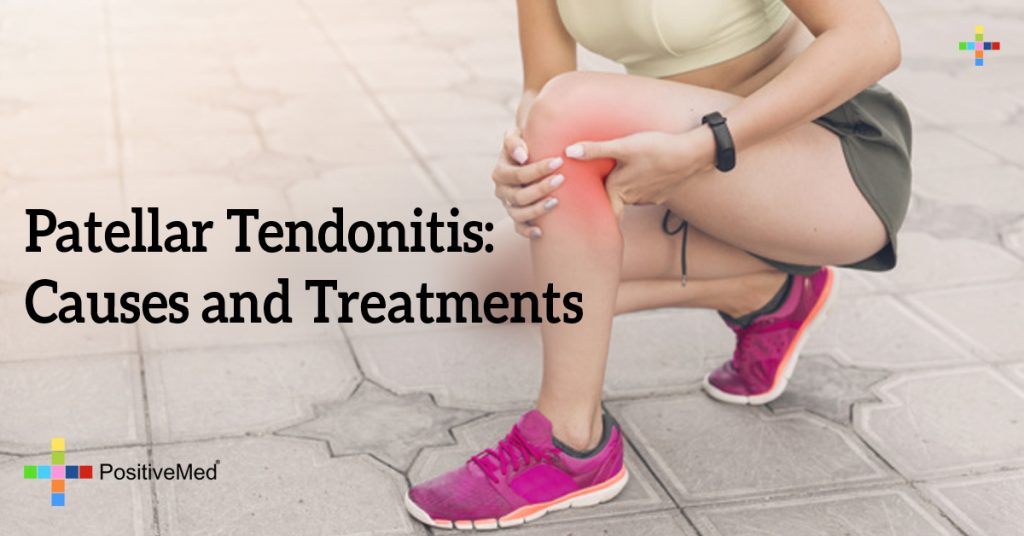
Patellar Tendonitis: Causes and Treatments
By PositiveMed-Team
Edited By Stephanie Dawson
The increased participation in sports and fitness activities have produced a rise in bone, joint, and tendon over-use injuries. One injury that has become more prevalent among fitness enthusiasts and athletes is patellar tendonitis or jumper’s knee. Its an inflammatory condition of the patellar tendon involved in knee extension. The cause of this condition is involvement in activities that use the knee-extensor mechanism at a maximal or almost submaximal level of force. Other factors that can contribute to this condition is quadriceps weakness, patellofemoral joint hypermobility, poor flexibility, or lower extremity misalignment. A person suffering from tendonitis can have different levels of functional impairment, depending on signs and symptoms and pain related to performing activities. Pain during and after activity that creates inability to perform and rated at the highest level is often a total rupture of the patellar tendon.
Traditional methods for patellar tendonitis are a mix of procedures that constitutes a standardized protocol in almost any tendon or joint inflammation:

• Rest– Rest the knee and avoid physical activities that involve moving the knee and high-impact activities such as walking stairs, jumping, or lifting weights. Do not perform any physical activities for 2-3 weeks to give it time to heal.
• Medication– Your doctor will probably recommend analgesics and anti-inflammatories. Avoid smoking and alcohol, they slow down the anti-inflammatory properties.
• Ice- Use an ice pack to ease pain and decrease inflammation. Ice the area for 20 minutes several times a day for 3 – 4 days.
• Physical therapy– This is often used to strengthen the muscles that surround the knee joint(quadriceps and hamstrings) and increase stability and balance.
Recommendations for preventing and treating patellar tendonitis
• Examine your posture. Look for full-length mirrors and look at your ankles, do they roll in or out? Stand on one foot, see if the hip drops on the opposite side, if so there might be weakness in your hips. Turn to the side, are your ears over your shoulders and hips?

The following remedies and supplements have shown to be effective against inflammatory tendons in joint conditions.
Vitamin D: will reduce the pain and progression of osteoarthritis and is essential for healthy bones and healing.
Omega-3 Fatty acids: may reduce the risk of osteoarthritis, arthritis, and reduce inflammation.
Glucosamine with chondroitin: can significantly improve pain and discomfort. Do not take if this if you have any problems with elevated blood sugar, diabetics should never take it.
Ginger: extract or ginger roots were better than placebo as pain killers with osteoarthritis, it might be as effective as ibuprofen.
There is an increased risk of injury when pregnant, due to extra stress on joints. Look for prenatal physical activities with low-impact such as yoga, Pilates, walking, or tai-chi.
Sources
Sommer H, M., a.A,. & Berschin, G.G (2002) Propioception and thus muscle strength measurement of the knee joint. Isokinetics & Exercises, 10(1), 44
YOUR JOINTS. By: Sklar, Hallie Levine, Health (Time Inc.), 1059938X, Jul/Aug2013, Vol. 27, Issue
High prevalence of patellar and Achilles tendinopathies in futsal athletes Abate, Michele. Journal of Sports Science & Medicine. Mar2012, Vol. 11 Issue 1, p180-181. 2p.





